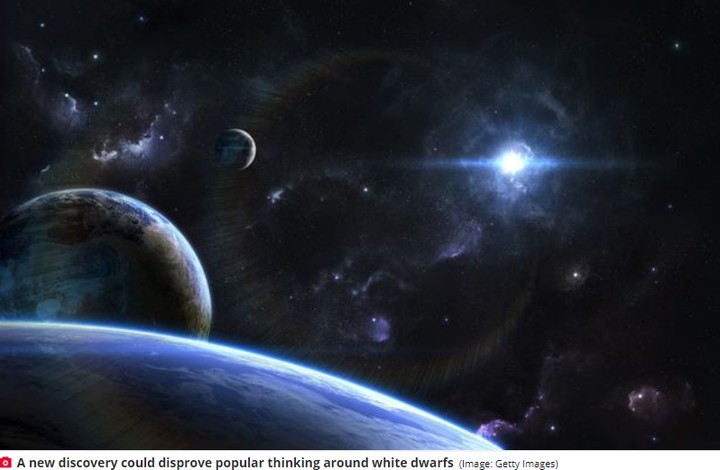An international team of astronomers are baffled after discovering an "impossible planet" the size of Jupiter – which could even host life.
Of the thousands of planets discovered outside the solar system, most orbit stars that will eventually evolve into red giants and then white dwarfs as part of their natural life cycle.
During a star's red giant phase, any planets caught in too close an orbit will be engulfed. Further away planets can survive and continue to orbit around the following white dwarf, although at a distance.
 Until now there's been no evidence that planets can survive intact while in close orbit around white dwarfs.
Until now there's been no evidence that planets can survive intact while in close orbit around white dwarfs.However a group of astronomers from around the world using NASA's Transiting Exoplanet Survey Satellite and the retired Spitzer Space Telescope recently observed a giant planet candidate "transiting" the white dwarf WD 1856+534 (TIC 267574918) every 1.4 days.
Transiting means when a planet eclipses its orbit star, from the perspective of observers on Earth.
The planet, believed to be around the same size as Jupiter, seems to be intact and locked in a tight orbit with the white dwarf, something previously thought to be impossible.
Researchers involved in the discovery, which was published in the journal Nature, say it defies much of what we know about the formation of planets.
Andrew Vanderburg, an assistant professor of astronomy at the University of Wisconsin-Madison who contributed to the paper, says one of the defining features of a white dwarf is that it tends to pull in celestial bodies with its strong gravity and destroy them in the process.
If the newly-discovered planet is verified to be intact, it will be an unprecedented discovery.
"The explanation that we think is the most likely is that there were other planets in the system or other objects in the system," Prof Vanderburg told Salon.
"We know that there are two other stars orbiting this white dwarf very far away. Maybe they could have exerted some influence on this planet that we saw back when it was orbiting far away originally because it had to be orbiting far away, or it would have been engulfed.
"It could have changed its orbit so that it was very, very elliptical, and then when it came in close to the star, it just barely grazed the surface."
The alternative explanation is that the planet avoided being engulfed by the white dwarf through its sheer density.
Prof Vanderburg says the discovery is particularly exciting because it suggests new types of planets existing in a "habitable zone" on which we can search for life.
"I think the biggest implication for this is that there's a possibility for life to be in places that we hadn't really considered before," he said.
"In a white dwarf system there's also a habitable zone, but because the white dwarf is really tiny and it's cooling off and is really, really faint, you have to huddle a lot closer to that star in order for it to be potentially habitable."


No comments:
Post a Comment